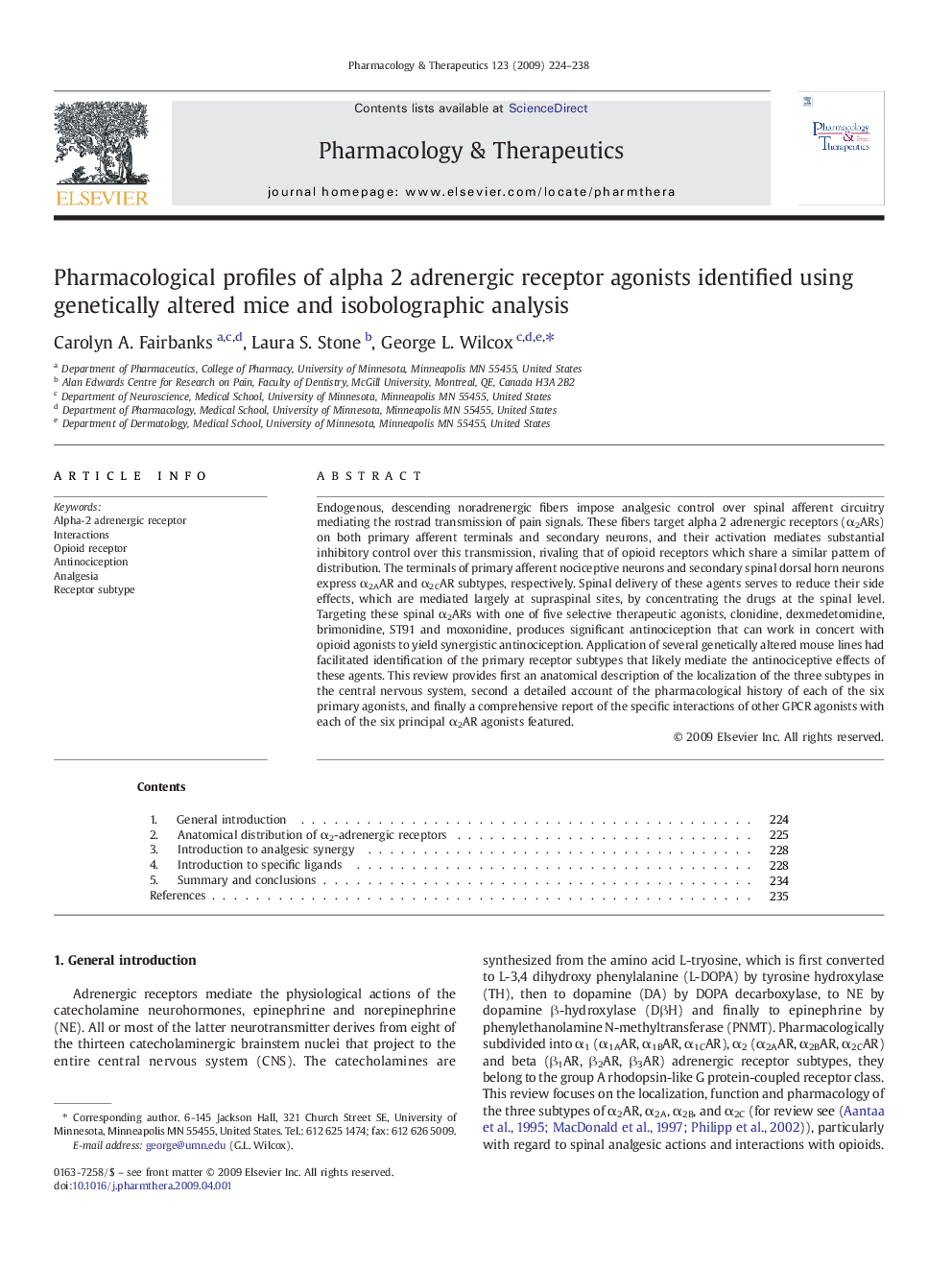| Article ID | Journal | Published Year | Pages | File Type |
|---|---|---|---|---|
| 5844132 | Pharmacology & Therapeutics | 2009 | 15 Pages |
Endogenous, descending noradrenergic fibers impose analgesic control over spinal afferent circuitry mediating the rostrad transmission of pain signals. These fibers target alpha 2 adrenergic receptors (α2ARs) on both primary afferent terminals and secondary neurons, and their activation mediates substantial inhibitory control over this transmission, rivaling that of opioid receptors which share a similar pattern of distribution. The terminals of primary afferent nociceptive neurons and secondary spinal dorsal horn neurons express α2AAR and α2CAR subtypes, respectively. Spinal delivery of these agents serves to reduce their side effects, which are mediated largely at supraspinal sites, by concentrating the drugs at the spinal level. Targeting these spinal α2ARs with one of five selective therapeutic agonists, clonidine, dexmedetomidine, brimonidine, ST91 and moxonidine, produces significant antinociception that can work in concert with opioid agonists to yield synergistic antinociception. Application of several genetically altered mouse lines had facilitated identification of the primary receptor subtypes that likely mediate the antinociceptive effects of these agents. This review provides first an anatomical description of the localization of the three subtypes in the central nervous system, second a detailed account of the pharmacological history of each of the six primary agonists, and finally a comprehensive report of the specific interactions of other GPCR agonists with each of the six principal α2AR agonists featured.
